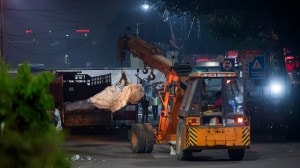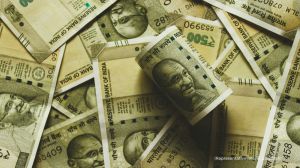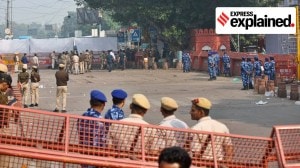Real lending rates halved to 3.8%: RBI
The Reserve Bank today said real lending rates nearly halved in FY12 to 3.8 per cent from about 7 per cent in the pre-crisis period of 2003-04 to 2007-08.
The Reserve Bank today said real lending rates nearly halved in FY12 to 3.8 per cent from about 7 per cent in the pre-crisis period of 2003-04 to 2007-08.
Real lending rate is calculated by subtracting inflation from the banks’ lending rates.
Attributing this decline to the elevated inflation rates and deceleration in growth,the RBI annual report for FY12,released here this evening said,the real interest rates of commercial lending had been heading south in FY12 from their highs during the pre-crisis period of 2003-04 and 2007-08.
“The real or net of inflation weighted average lending rate (WALR) increased only moderately to about 3.8 per cent in 2011-12,but remained lower than the average of about 7 percent in the pre-crisis period of 2003-04 to 2007-08,” the report said,quoting its own calculation of the weighted average lending rates of banks.
Stating that this fall was due to an investment boom during the pre-crisis period,the report said “the fall in real lending rates in post-crisis period is even sharper if GDP deflators are used to calculate inflation instead of WPI.
“The fact is that real lending rates have secularly declined since 2003-04. During this period,investment boomed initially,but stalled in recent years even though real rates continued to decline,” the report said.
In economics,the GDP deflator is a measure of the level of prices of all new,domestically produced,final goods and services in an economy.
However,the report said that according to an exercise undertaken by the RBI to calculate the WALR of banks using the accounts-level data from basic statistical returns,the effective lending rate in nominal terms rose in FY12 in response to monetary tightening.
“Preliminary data suggest that the WALR rose to 12.7 per cent,slightly higher than the average of 12.4 percent in the pre-crisis period. But the nominal rates fell in the post-crisis period before hardening in 2011-12,” the report said.
Industry chambers,some analysts as well as a section of the Government have been blaming the high interest rates for the poor performance of economy,while the RBI fought back saying it was not high inflation but high fiscal deficit and poor investment climate that have brought down growth.
In FY12,GDP growth slipped to nine-year low of 6.5 per cent,even as fiscal deficit and current account deficit widened to 5.8 per cent and 4.3 per cent of GDP last fiscal.
Following the 2008 credit crisis,the RBI went for monetary easing and brought down the key short-term lending rate,or repo rate,to 4.75 per cent.
Following the speedier recovery of economy in FY09,the apex bank,beginning March 2010,began rate tightening as inflation started looking up. After a series of hikes,repo rate touched a high of 8.5 per cent in October 2011.
After a sharp deceleration in growth and inflation still high,RBI reduced the repo by 50 bps in April to 8 per cent and cash reserve ratio of banks to 4.75 per cent.
However,the report admitted that high interest rates have contributed marginally to growth decline,but it still defended RBI’s hawkish inflation stance.
“The decline in investment started in H2 of 2010-11 for reasons that were linked to global uncertainties,structural constraints,loss of pro-reform policy momentum,persistent inflation and increasing business uncertainties.”
However,the apex bank noted that two years of high inflation amidst wide fiscal and current account deficits would have had adverse consequence for welfare.
“Inflation changes the future consumption basket by reducing the real value of the amount saved today,thus making current consumption more attractive. Real value of savers’ holdings of cash as well as fixed income products declines,” the report concluded.



- 01
- 02
- 03
- 04
- 05




























